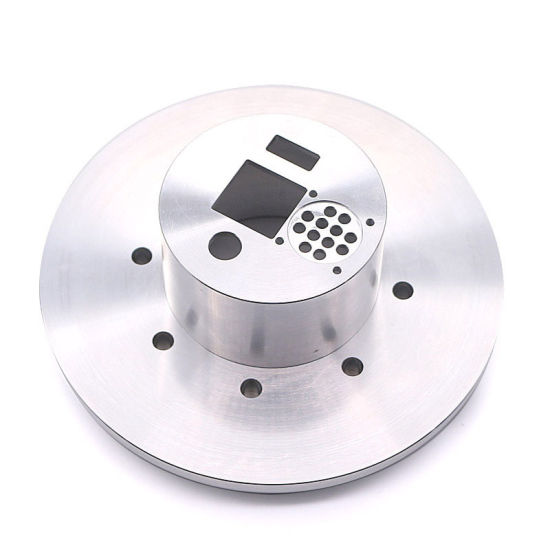Aluminum alloy is the most widely used non-ferrous metal structural material in the industry, and there are aluminum alloy workpieces in aviation, aerospace, automobile, machinery manufacturing, shipbuilding and chemical industries. In order to reduce the weight in the aircraft structure, a large number of thin-walled parts made of aluminum alloy materials are used. Due to the large thermal expansion coefficient of the aluminum alloy parts, the thin-walled parts are easily deformed during the thin-wall processing. Especially when the free forging blank is used, the allowance is large, and the deformation problem is more prominent.

Causes of Cutting Deformation of Aluminum Alloy Workpieces
There are many reasons for the deformation of aluminum alloy parts, which are related to the material, the shape of the part, the process conditions, and the performance of the cutting oil. There are mainly the following aspects: deformation caused by internal stress of blank, deformation caused by cutting force and cutting heat, and deformation caused by clamping force.
Technological Measures to Reduce Workpiece Deformation
There are some technological measures to reduce workpiece deformations.
1. To reduce the internal stress of the blank, the internal stress of the blank can be partially eliminated by aging and vibration treatment or pre-processing, and the blank workpiece with a large allowance will be deformed greatly. If the excess part of the blank is removed in advance to reduce the allowance of each part, it can not only reduce the deformation of the subsequent process, but also release a part of the internal stress by placing it for a period of time.
2. Reasonable Selection of Tool Geometric Parameters
Rake angle:
Under the condition of maintaining the strength of the blade, the rake angle is appropriately selected to be larger, on the one hand, it can grind a sharp edge, and on the other hand, it can reduce the cutting deformation and make the chip removal smooth, thereby reducing the cutting force and cutting temperature.
Relief angle:
The size of the relief angle has a direct impact on the flank wear and surface quality. During rough milling, due to the large feed rate, heavy cutting load and large heat generation, the tool is required to have good heat dissipation conditions, so the clearance angle should be selected to be smaller. During fine milling, the cutting edge is required to be sharp to reduce the friction between the flank and the surface and reduce elastic deformation, so the relief angle should be larger.
Helix angle:
In order to reduce the milling force smoothly, the helix angle should be as large as possible.
Main declination angle:
Properly reducing the main declination angle can improve the heat dissipation conditions and reduce the average temperature.
3. Improve the tool structure, reduce the number of milling cutter teeth and increase the chip space. Due to the large plasticity of the aluminum alloy material and the large cutting deformation, a large chip space is required, so the bottom radius of the chip groove should be large and the number of milling cutter teeth should be small.
4. Before using the new knife, the finely sharpened teeth should be gently sharpened with a fine oil stone in front and behind the teeth to eliminate the residual burrs and slight serrations when sharpening the teeth. This not only reduces the cutting heat but also reduces the cutting deformation.
5. Strictly control the wear of the tool. After the standard tool wears, the surface roughness value of the workpiece increases, and the workpiece deformation increases with the increase of cutting temperature. Therefore, in addition to the selection of tool materials with good wear resistance, the degree of tool wear should also be strictly controlled, otherwise it is easy to generate built-up edge. The temperature of the workpiece during cutting should not be too high to prevent deformation.
6. Improve the clamping method of the workpiece. For thin-walled aluminum alloy workpieces with poor rigidity, for thin-walled bushing parts, if a three-jaw self-centering chuck or a spring chuck is used for radial clamping, once the workpiece is released Deformation is bound to occur. Use the inner hole of the part to position a self-made threaded threaded shaft into the inner hole of the part, and use a cover plate to press the end face and tighten it with a nut. The outer circle can avoid clamping deformation and obtain satisfactory accuracy.
7. Selection of cutting oil Due to the low hardness and poor machinability of aluminum alloys, there are higher requirements for the cooling, lubrication, penetration and cleaning performance of the cutting oil, and certain corrosion resistance is also required to prevent the workpiece from developing. Black, commonly used cutting oils can form high melting point sulfides on the metal surface during cutting, and are not easily damaged at high temperatures, have good lubrication, and have a certain cooling effect, generally used for cutting, drilling, reaming and Tapping and other processes.